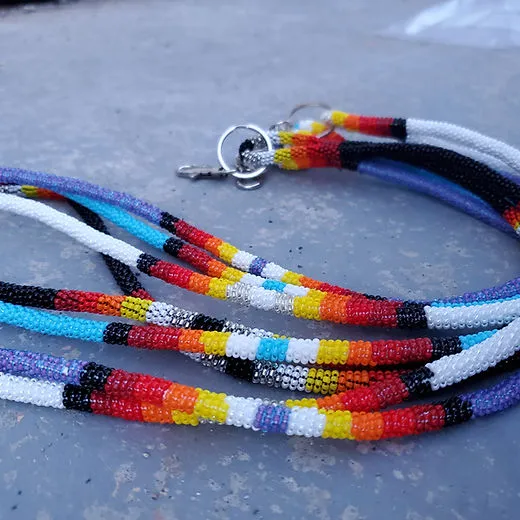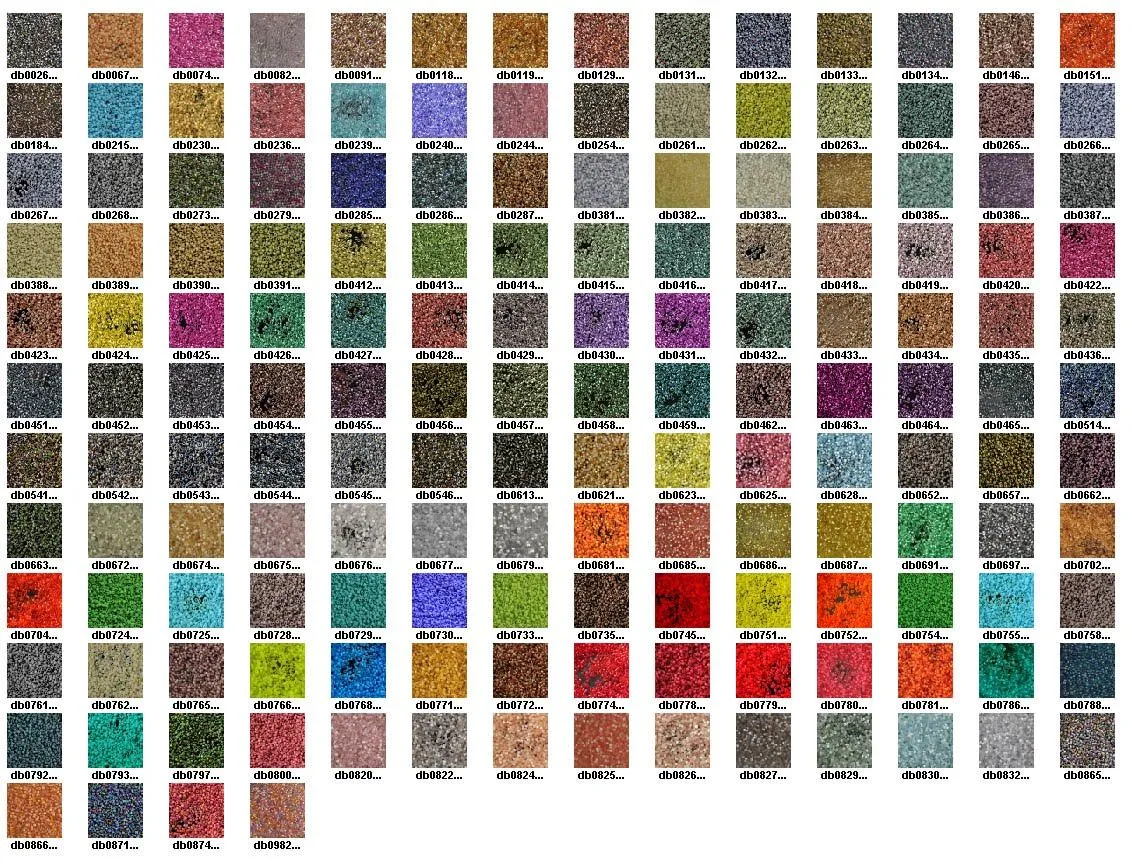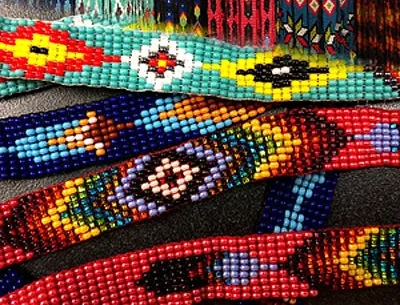Creating a Native American beaded lanyard Patterns is a captivating journey into the heart of indigenous artistry. These exquisite pieces are not just functional accessories; they are expressions of culture and tradition. In this guide, we’ll explore how to craft your very own Native American beaded lanyard, complete with intricate patterns that tell a story.
Join us as Native American Clothes unravel the art of beadwork and embark on a creative adventure.
What does the beaded necklace mean in Native American culture?
The Beadwork Revolution
So, picture this: European settlers roll up to North America, and they’re packing something special – vibrant glass beads. These beads were like gold dust, rare and shining bright. As can imagine, the indigenous folks were pretty thrilled to get their hands on these beauties. And that’s when things started to change.
The Rise and Fall of Wampum
Before the glass beads stole the spotlight, there was something called wampum. It was all the rage in Native American communities – shells threaded onto cords, used for various ceremonies and everyday life. It was like the currency of the day. But, as the settlers flooded the market with wampum, its value took a nosedive.

Beaded Patterns: More Than Meets the Eye
Now, here’s where it gets interesting. Those intricate Native American beaded patterns? They became more than just eye candy. They turned into symbols of wealth, flaunted by individuals with some serious social standing. Think of them as the bling of the indigenous world.
Beads and Agreements
But it doesn’t stop there. Beaded patterns played crucial roles in marriages, trade deals, and treaties between tribes and the European settlers. The designs weren’t just for show; they were woven into the very fabric of important agreements and cultural exchanges.
Beadwork That Dances with Spirits
And here’s the kicker – some beadwork patterns weren’t just for decoration. Nope, they had deeper meanings tied to spirituality. They were part of sacred dances, celebrations, and rituals, connecting people to their ancestors and the spiritual realm.
So, there have it, a glimpse into how the arrival of Europeans rocked the world of Native American beadwork. It’s a tale of shifting values, intricate designs, and the enduring spirit of a rich cultural tradition.
What size seed beads for Native American beading?

The Czech Connection
So, first things first, where do these magical beads come from? Well, they’ve got some serious Czech roots. The Czech Republic has been churning out these little wonders since the early 20th century. When it comes to beadwork, Native Americans know that quality matters, and that’s why they’ve been loyal to Czech seed beads for generations.
Why 11/0 Czech Seed Beads?
Now, you might be wondering, what’s so special about these 11/0 Czech Seed Beads? Well, my friends, it’s all about uniformity. These beads are like the A-listers of the bead world because they come in the same size, shape, and sport a rainbow of colors. When you’re crafting intricate beadwork, consistency is key, and these beads deliver that in spades.
Strung vs. Loose: The Beader’s Dilemma
When it comes to getting your hands on these beads, you’ve got two options: strung or loose. Now, if you ask seasoned beadwork enthusiasts, they’ll tell you that strung beads are where it’s at. Why, you ask? Well, they’re top-notch in quality, super easy to work with, and have minimal rejects (or “culls” as we like to call them).
A Word on Colors
One thing to keep in mind, folks, is that when you’re working with these beauties, color is king. Be sure to order enough beads in your background color because dye lots can be a bit finicky. You see, they might vary ever so slightly in hue, and you want that background to match perfectly. Trust us; it’s worth the extra attention to detail.
Size Matters, But Don’t Sweat the Small Stuff
Now, it’s true that sometimes these beads can be slightly off-size. But fear not, it’s not a flaw – it’s just the nature of the manufacturing game. When you’re working on intricate designs, those slight variations won’t be a deal-breaker. It’s all part of the creative journey.
Price Point
Before we wrap things up, let’s talk about prices. These beads are typically sold in single hanks. So, make sure to check the listings and snag as many as you need for your beadwork masterpiece.
There you have it, folks, a glimpse into the world of 11/0 Czech Seed Beads, the unsung heroes of Native American beadwork. Whether you’re a seasoned pro or just starting your beading journey, these little gems will be your trusty companions every step of the way.
How To Make A Native American Beaded Lanyard Patterns?

A World of Colors and Patterns
Native American beadwork is renowned for its intricate patterns and rich color schemes. Before we dive into crafting, take some time to plan your design. Spread your seed beads on a piece of felt, arranging them into a Native American pattern. Aim for a flat, square design with geometric shapes, arrows, and a variety of bold colors. You can even experiment with edging the pattern in contrasting colors or extending it to the edges of your project.
Gather Your Materials
To bring your vision to life, you’ll need some essential materials. Start by cutting a piece of beading wire that’s approximately six times longer than the desired length of your lanyard. For example, if you want a 6-inch lanyard, a 3-foot piece of beading wire will do the trick.
Weaving the Magic
Now, it’s time to weave your Native American beaded lanyard. This process involves a unique technique that results in a stunning, flat design. Follow these steps:
Step 1: Stringing the Foundation
Begin by stringing the first row of beads from your pattern onto the center of your beading wire. Make sure your design lies flat and square around the edges. The key here is precision, so pay close attention to your pattern.
Step 2: Bead by Bead
For the second row, things get a bit unconventional. String the beads onto the left side of the wire, but here’s the twist—it must be done backward. This is a critical step to ensure your pattern turns out as intended.
Step 3: Creating Layers
Now, fold the second row of beads to the right so that it lies parallel and slightly below the first row of beads. Slide the right side of the wire through the row of beads to the left. This maneuver creates a layered effect that adds depth and intricacy to your lanyard.
Step 4: Keep Going
Repeat the process for each successive row of beads until you’ve completed your pattern. If you have any excess wire, gently feed it back into the last row of beads. To secure your creation, a dab of superglue will do the trick.
There you have it! You’ve embarked on a colorful journey into the world of Native American beaded lanyards. Your finished piece will not only be a stunning accessory but also a testament to the rich heritage and craftsmanship of Native American beadwork. So, gather your beads, let your creativity flow, and craft your own masterpiece today.

